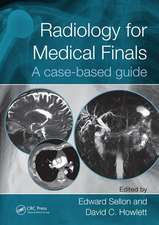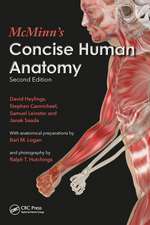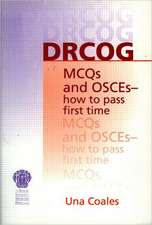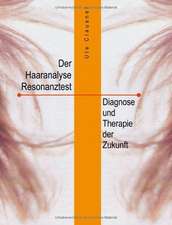Case Closed! Neuroanatomy
Autor Warren Berger, John Bergeren Limba Engleză Paperback – 27 mar 2017
Developed specifically in response to student feedback, the authors have succeeded in creating a novel, brief, and high-yield primer that offers a unique approach to mastering this challenging discipline. Case Closed! Neuroanatomy not only teaches students how to localize, but also guides them to solve successfully the problems that will reappear in their exams and in the clinic.
Preț: 277.11 lei
Preț vechi: 291.69 lei
-5% Nou
Puncte Express: 416
Preț estimativ în valută:
53.03€ • 56.70$ • 44.21£
53.03€ • 56.70$ • 44.21£
Carte disponibilă
Livrare economică 27 martie-10 aprilie
Livrare express 13-19 martie pentru 41.47 lei
Preluare comenzi: 021 569.72.76
Specificații
ISBN-13: 9781498728522
ISBN-10: 1498728529
Pagini: 352
Ilustrații: 5 Tables, black and white; 180 Illustrations, color
Dimensiuni: 178 x 254 x 24 mm
Greutate: 0.73 kg
Ediția:1
Editura: CRC Press
Colecția CRC Press
ISBN-10: 1498728529
Pagini: 352
Ilustrații: 5 Tables, black and white; 180 Illustrations, color
Dimensiuni: 178 x 254 x 24 mm
Greutate: 0.73 kg
Ediția:1
Editura: CRC Press
Colecția CRC Press
Cuprins
Part I. General Anatomy Overview. Peripheral Nervous System. Spinal Cord. Brainstem and Cranial Nerves. Basal Ganglia and Cortex. Part II: The Cases. Peripheral Lesions. Spinal Cord. Brainstem. Cranial Nerve. Lacunar. Cortex.
Descriere
Case Closed! Neuroanatomy offers a brand-new approach to learning neuroanatomy for medical students and newly-qualified doctors, particularly those considering a career in neurology and neurosurgery. Promoting active learning and taking inspiration from other popular case-based formats, readers are encouraged to overcome their inherent ‘neurophobia’. The accessible text and practical examples, unencumbered by esoteric minutiae, support students and trainees in developing the necessary skills that will be essential in later clinical practice.
















